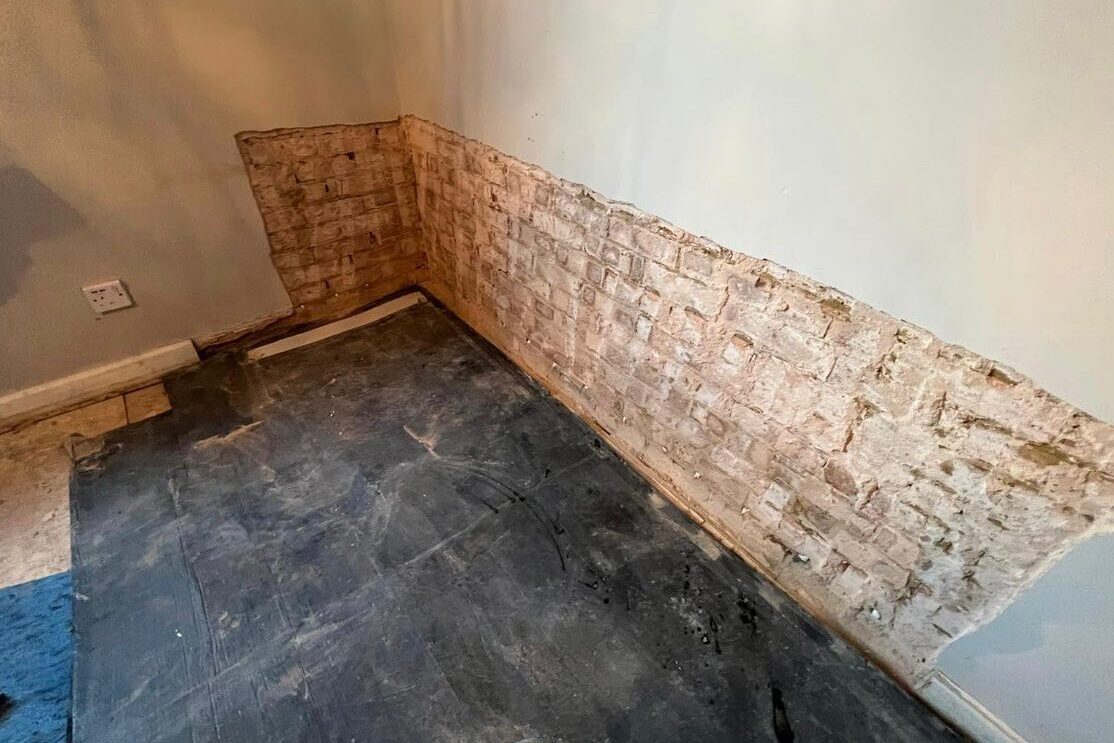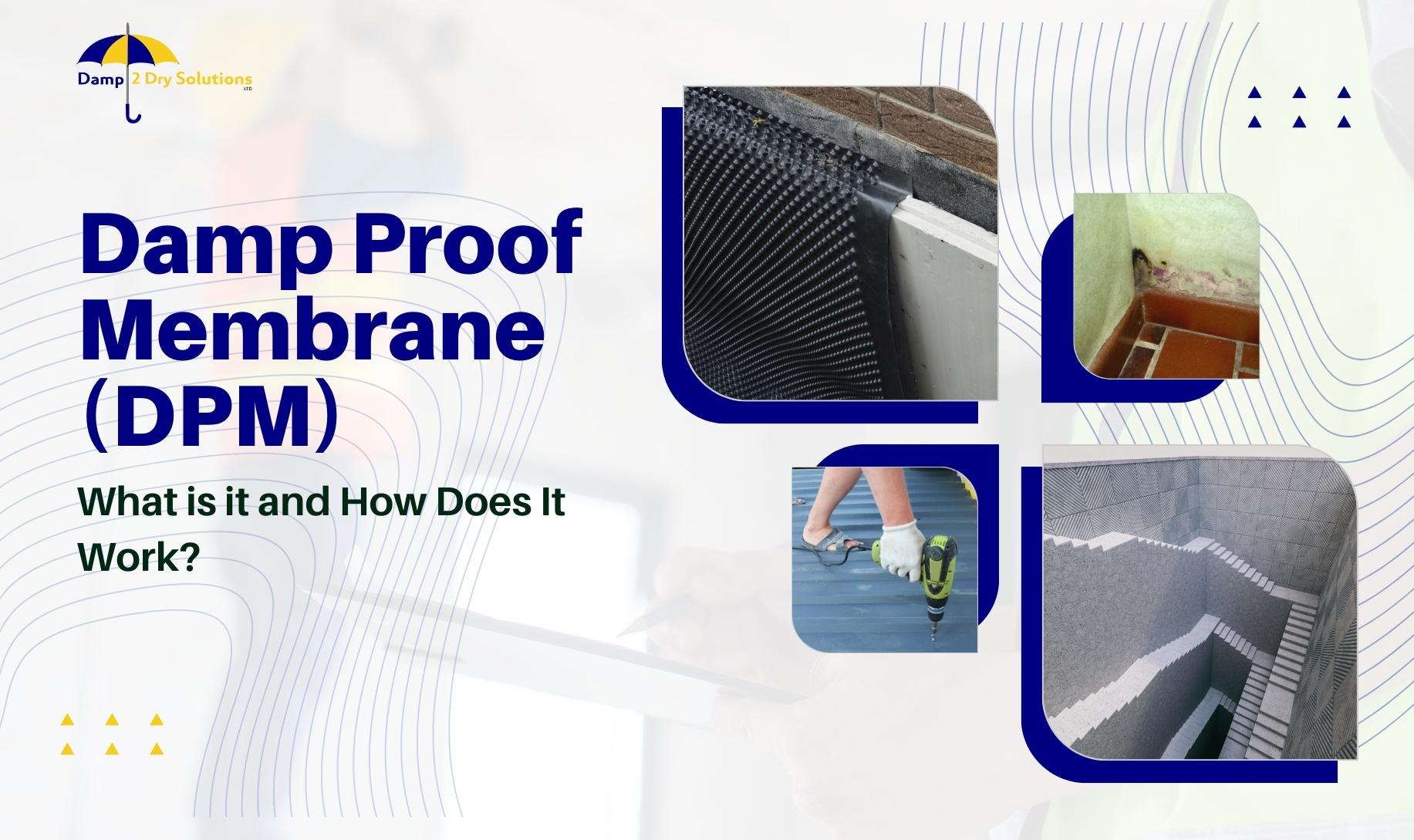Discovering the Numerous Methods and Solutions for Effective Damp Proofing
Dampness in structures postures substantial difficulties to both structural honesty and indoor air quality. Numerous methods and services have actually arised to combat this prevalent problem. From conventional damp-proof membrane layers to ingenious chemical treatments, each approach provides one-of-a-kind benefits. Understanding these alternatives is crucial for efficient moisture control. Nevertheless, selecting the right option depends on details building problems and demands, motivating further expedition into the most reliable damp proofing approaches offered.
Understanding the Sources Of Wetness
Dampness can develop from numerous sources, understanding these causes is crucial for reliable remediation. Typically, moisture stems from 3 key resources: climbing damp, permeating moist, and condensation. Increasing moist takes place when groundwater takes a trip up through porous materials, such as brick or stone, frequently as a result of a lack of an efficient obstacle (damp removal newcastle). Permeating damp is normally caused by external factors, including roof leakages, faulty gutters, or damaged wall surfaces, permitting water to penetrate a property. Condensation, on the other hand, results from excess dampness in the air, frequently intensified by poor air flow and temperature level distinctions, causing water droplets forming on surface areas. Determining these underlying problems is vital, as each sort of wetness needs a tailored approach for removal. Appropriate assessment aids in figuring out the most reliable options, eventually protecting the structural stability of a building and boosting indoor air quality
Traditional Damp-Proof Membrane Layers

Chemical Damp-Proofing Solutions
Chemical damp-proofing services provide an ingenious technique to stop dampness breach in buildings. These methods normally involve the application of liquid chemicals that pass through stonework and create a barrier against rising damp. Commonly made use of chemicals consist of silanes, siloxanes, and various other water-repellent agents that react with surface area products to produce a hydrophobic layer.The application process usually requires drilling holes right into the wall surfaces, injecting the chemical service, and allowing it to heal. This technique is especially beneficial for older structures where conventional damp-proof membranes might be unwise. Moreover, chemical damp-proofing can be less disruptive and extra economical than substantial remodelling projects.While effective, these remedies depend upon proper application and ecological conditions for peak efficiency. Regular upkeep and surveillance are necessary to guarantee the durability of the damp-proofing therapy. Generally, chemical damp-proofing stands for a versatile alternative for safeguarding buildings versus moisture-related damages
Cavity Wall Surface Building And Construction Techniques
Tooth cavity wall surface construction techniques use numerous advantages, especially in dampness control and power efficiency. By incorporating an air space in between 2 layers of stonework, these wall surfaces effectively reduce water ingress while improving insulation. This mix not only shields frameworks from dampness but also contributes to minimized power intake.
Benefits of Cavity Walls
When thinking about efficient moist proofing techniques, the advantages of tooth cavity wall surfaces stick out plainly. Tooth cavity walls consist of two separate layers, creating an air gap that effectively reduces moisture infiltration. This layout decreases the threat of wetness, as the external wall serves as a barrier versus rainfall and water ingress. Furthermore, tooth cavity walls boost thermal insulation, which adds to energy efficiency by reducing warmth loss. They additionally supply sound insulation, helping to develop a quieter interior environment. Moreover, the air space enables for ventilation, which assists in wetness control and decreases the likelihood of mold and mildew growth. These advantages not just improve the general comfort of a structure however also add to its long life and architectural stability.
Moisture Control Approaches
Efficient wetness control methods are crucial in tooth cavity wall building to assure lasting defense versus dampness. One main technique includes the consolidation of weep openings, which assist in water drain from the tooth cavity, protecting against accumulation. Additionally, making use of breathable membranes can help manage dampness degrees while allowing entraped vapor to escape. Appropriate positioning of insulation is likewise essential, as it needs to not block drain courses. Moreover, ensuring that the external fallen leaves of the tooth cavity wall are constructed with water-resistant products improves general toughness. Regular maintenance checks are vital to determine any blockages or damages early, protecting the structure's honesty. Inevitably, a combination of these techniques creates a robust protection against dampness invasion in cavity wall surfaces.
Insulation and Energy Performance
Insulation plays a crucial role in improving energy effectiveness within tooth cavity wall building and construction. By incorporating shielding materials, these wall surfaces create a thermal barrier that decreases warmth loss and decreases power consumption. Efficient insulation not only assists keep a stable interior temperature however additionally alleviates the threat of dampness, as it stops condensation within the wall surface dental caries. Various techniques, such as using you could try this out stiff foam boards or mineral woollen, can be employed to achieve excellent insulation efficiency. Additionally, appropriate setup is necessary to ensure that voids and voids are minimized, which can otherwise jeopardize power performance. Inevitably, a well-insulated cavity wall contributes substantially to overall sustainability and lowers cooling and heating expenses for house owners.
Exterior Damp Proofing Approaches
External moist proofing techniques are necessary for shielding frameworks from dampness seepage. 2 effective methods include the application of water resistant membranes and the installation of French drains. These solutions help minimize water build-up and protect the stability of buildings.
Waterproof Membrane Application
While numerous approaches exist for protecting against dampness access, the application of water-proof membrane layers stays an extremely effective external wet proofing method. These membrane layers are generally made from products such as polyethylene, rubber, or customized bitumen, supplying a durable barrier versus water infiltration. The setup process involves using the More Info membrane to the external surface areas of foundations or walls, guaranteeing complete insurance coverage to stop leaks. Correct bond and sealing at joints are crucial to optimizing efficiency. Water-proof membranes can be used in different forms, consisting of liquid layers and sheet membranes, permitting versatility based on the certain requirements of the structure. This method not only shields buildings from wetness but additionally enhances their durability and structural honesty.
French Drain Setup
One reliable method for handling groundwater and protecting against wetness accumulation around a building's foundation is the installation of a French drain. This water drainage system includes a trench loaded with gravel and a perforated pipe that reroutes surface area water far from the foundation. Appropriate setup calls for cautious preparation, guaranteeing that the drain inclines far from the framework to facilitate suitable water circulation. Furthermore, the area of the drainpipe is vital; it should be positioned in areas susceptible to pooling or excess dampness. Regular maintenance, including clearing debris from the gravel and guaranteeing the pipe stays unobstructed, is vital for long-lasting efficiency. Eventually, a well-installed French drainpipe can considerably lower the threat of water-related concerns in basements and foundations.
Inside Waterproofing Methods
Inside waterproofing methods are crucial for shielding a structure's inside from wetness infiltration and potential water damages. These approaches commonly entail the application of customized products and methods developed to create a dampness obstacle within the structure. One common strategy is making use of water-proof layers or sealers on walls and floorings, which stop wetness from penetrating surfaces.Additionally, mounting indoor drain systems, such as sump pumps, can effectively take care of water build-up in basements and creep spaces. An additional technique includes the use of vapor obstacles, which are set up to hinder wetness movement from the ground right into living spaces.Moreover, dealing with any blog here splits or spaces in wall surfaces or foundations with ideal sealants assures a detailed defense versus water invasion. By implementing these indoor waterproofing strategies, residential or commercial property proprietors can greatly minimize the risk of mold and mildew growth, structural damages, and other moisture-related problems. Correct execution of these methods is crucial for lasting security and building honesty.
Routine Upkeep and Inspection Practices
Routine upkeep and evaluation techniques are vital for ensuring the lasting efficiency of damp proofing options in any kind of structure. Routine checks allow homeowner to determine very early indicators of dampness intrusion, such as peeling off paint, mold development, and mildewy smells. These indicators can signal underlying issues that require instant attention.Inspections need to be performed at least annually, focusing on susceptible areas like basements, crawl rooms, and outside wall surfaces. Throughout these analyses, residential or commercial property owners should examine sealants, drain systems, and ventilation to confirm they function correctly.Additionally, maintaining downspouts and gutters is essential, as clogged systems can bring about water accumulation near the foundation. Applying a normal upkeep schedule, along with prompt repair services, can significantly prolong the life expectancy of damp proofing measures and shield the architectural integrity of the structure. Positive steps eventually add to the total health and wellness and security of the living environment.
Often Asked Questions
For How Long Does Damp Proofing Generally Last?
The duration of wet proofing efficiency differs, commonly lasting between 20 to half a century. Elements such as application quality, environmental problems, and maintenance practices substantially influence the long life of the damp proofing therapy.

Can I Damp Proof My Home Myself?
The specific considered the usefulness of DIY damp proofing. With correct research study and the right products, it is feasible. They also acknowledged the relevance of professional support to assure lasting performance and avoid future concerns.
What Are the Signs of Inefficient Damp Proofing?
Indications of inadequate damp proofing include consistent stuffy smells, noticeable mold and mildew development, peeling paint, moist patches on wall surfaces, and timber degeneration - mould removal newcastle. Home owners must deal with these issues quickly to stop more damages and wellness concerns
Does Damp Proofing Affect Indoor Air Top Quality?

How Much Does Professional Damp Proofing Cost?
Professional wet proofing prices differ substantially, commonly ranging from $1,000 to $5,000 depending on the home's size, the extent of the wet concern, and picked techniques. Each circumstance requires a customized analysis for exact rates. Generally, moisture originates from 3 key sources: climbing wet, permeating damp, and condensation. When taking into consideration effective wet proofing techniques, the advantages of dental caries wall surfaces stand out prominently. Exterior moist proofing methods are crucial for securing structures from moisture seepage. While different methods exist for protecting against wetness ingress, the application of water resistant membranes continues to be a highly reliable external damp proofing strategy. Signs of inadequate moist proofing consist of persistent stuffy odors, noticeable mold and mildew growth, peeling off paint, damp spots on walls, and timber decay.